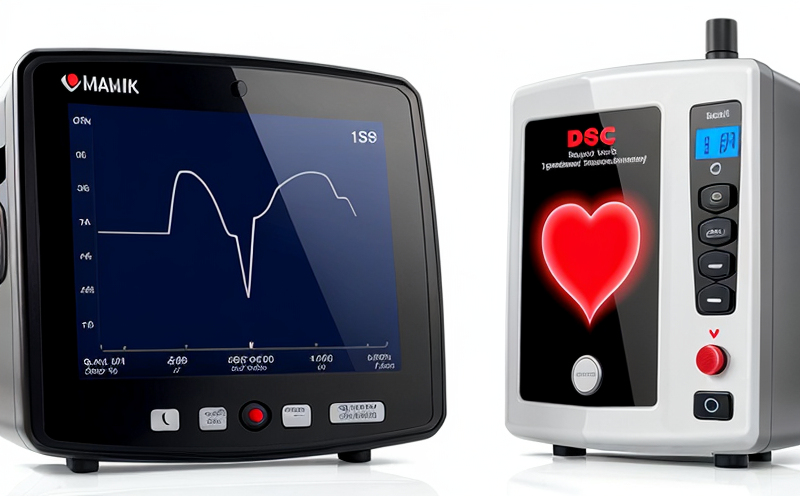RF Heating Evaluation Testing for Cardiovascular Implants
The rapid evolution of medical technology has led to a surge in cardiac and cardiovascular device innovations aimed at enhancing patient outcomes. Among these advancements is the development of devices that incorporate Radio Frequency (RF) heating technology, designed to deliver energy directly to specific areas within the body. This service focuses on the rigorous evaluation and testing of RF heating systems for cardiovascular implants, ensuring they meet stringent safety and performance requirements.
Our laboratory specializes in providing comprehensive testing services tailored to the unique challenges posed by RF heating devices. Our team includes experts with deep experience in medical device evaluation, regulatory compliance, and advanced instrumentation techniques. The testing process involves a series of steps aimed at identifying potential risks associated with RF heating, ensuring that all devices are safe for clinical use.
At the heart of our service is the ability to simulate real-world conditions under which cardiovascular implants operate. This includes understanding the thermal effects on tissues and fluids within the body, which can significantly impact device performance and patient safety. Our testing protocols are designed to replicate these environments accurately, providing reliable data that informs critical design decisions.
One of the key aspects of our service is the ability to evaluate both single-use and reusable RF heating devices. For single-use devices, we ensure that they meet the necessary standards for one-time use while also assessing their initial performance characteristics. Reusable devices require additional scrutiny due to potential wear and tear over multiple uses. We employ advanced techniques to assess how these devices hold up under repeated sterilization processes without compromising their functionality or safety.
The testing process begins with thorough documentation of the device specifications, including material composition, power output levels, and intended use within the body. This information is crucial for tailoring our tests appropriately. Once this initial step is completed, we proceed to conduct a series of thermal cycling tests that simulate the expected operating conditions in the patient’s body.
During these tests, we carefully monitor temperature changes at various points along the device and surrounding tissues. By doing so, we can identify any potential hotspots or areas where excessive heat could cause damage to nearby structures like blood vessels or nerves. Additionally, we examine how well the device distributes energy evenly across its surface, which is critical for minimizing thermal gradients that might lead to tissue injury.
Another important aspect of our testing involves evaluating the electrical characteristics of RF heating devices. We measure parameters such as impedance and phase angle to ensure that these values fall within acceptable limits prescribed by relevant standards. Deviations from specified ranges could indicate issues with either the design or manufacturing process, necessitating further investigation before clearance can be granted.
Finally, we assess the mechanical integrity of RF heating devices through durability tests designed to mimic typical usage patterns in clinical settings. These trials help us determine whether there is any degradation in performance over time due to factors such as friction between moving parts or chemical reactions involving materials used in construction.
The results from our comprehensive evaluation process are presented in detailed reports that include all relevant data collected during testing along with interpretations and recommendations based on findings. These insights provide valuable guidance for manufacturers seeking to improve their products while ensuring regulatory compliance.
Applied Standards
| Standard | Description |
|---|---|
| ISO 10993-1 | Biological evaluation of medical devices—Part 1: Evaluation and testing within a risk management process. |
| AAMI TIR42 | Evaluation of the biological effects related to heat for medical electrical equipment used in body fluid contact. |
| IEC 60601-2-39 | Medical electrical equipment—Particular requirements for the safety and performance of basic insulation and additional insulation used with devices that generate heat. |
| Standard | Description |
|---|---|
| ASTM F2705 | Determination of the amount of energy transferred to a tissue during RF heating. |
| EN 60601-2-43 | Medical electrical equipment—Particular requirements for basic insulation and additional insulation used with devices that generate heat. |
Benefits
- Comprehensive evaluation of RF heating devices ensuring they meet all relevant regulatory requirements.
- Identification of potential risks associated with thermal effects on tissues and fluids within the body.
- Evaluation of both single-use and reusable devices under realistic operating conditions.
- Detailed reports providing valuable insights for improving product design while maintaining compliance.
The benefits extend beyond just meeting regulatory standards; our testing also helps manufacturers identify areas where improvements can be made to enhance the safety and effectiveness of their products. By incorporating this feedback into future iterations, companies not only improve their market position but also contribute positively towards advancing medical technologies that benefit patients worldwide.
Quality and Reliability Assurance
- Thorough documentation of device specifications to tailor tests appropriately.
- Careful monitoring of temperature changes at various points along the device and surrounding tissues.
- Evaluation of electrical characteristics such as impedance and phase angle within acceptable limits prescribed by relevant standards.
- Assessment of mechanical integrity through durability tests designed to mimic typical usage patterns in clinical settings.
To ensure consistent quality throughout our testing process, we adhere strictly to established protocols outlined in international standards. This approach guarantees that every test conducted adheres to the highest industry practices, thus providing reliable results that can be trusted by clients and regulatory bodies alike.





